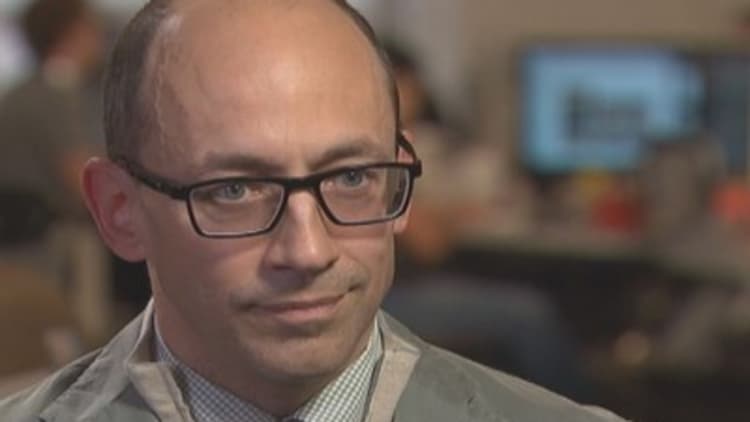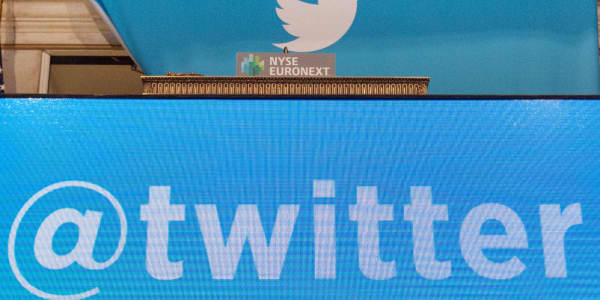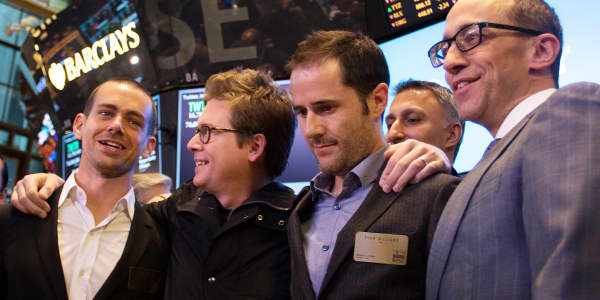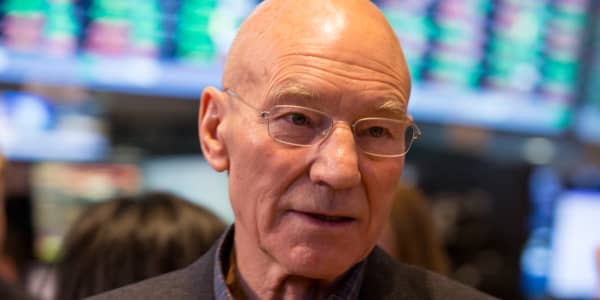On the eve of its initial public offering, which could raise billions and mint new millionaires, it's worth exploring Twitter's business model and prospects. Can a community of ephemeral messaging morph into a serious, profitable venture?
When eBay went public 15 years ago, the virtual marketplace was a concept merchants and shoppers could easily grasp. Searchable flea market? Got it. The Twitter community, though, takes more effort to envision. In fact nearly half of active investors say Twitter would not be a good investment, according to a new poll.
But make no mistake. The global mashup of 140 character tweets, or text messages, has serious business gumption. Only 7 years old, Twitter is earning revenue on an advertising foundation, albeit a nascent one. Its active users are growing in ranks, especially internationally. And then there's Hollywood. Twitter is building partnerships with content creators in media and entertainment.
"What Twitter is selling essentially is a new type of advertising platform, scalable across desktop and mobile," said Brian Solis, principal analyst at Altimeter Group, a San Mateo, Calif.-research group.
(Read more: Twitter 101: Where should investors start?)

In a road show video for institutional investors, senior Twitter executives are effusive. "There's an incredible leveling of the playing field that gives every voice the ability to echo around the world instantly," says Twitter CEO Dick Costolo in the video. "And that democratization of content creation and sharing, facilitates these connections."
Democratization of content? It's this kind of philsophizing that may explain why Twitter's IPO isn't resonating loudly. If eBay is a vast bazaar to hoard stuff; and Facebook is a utilitarian planner to track friends, Twitter can be an infuriating rant about everything and nothing, the serious to silly.
"I hated Twitter at first. I thought it was the stupidest thing I'd ever seen," said Mark Schaefer, a social media consultant. "Then I realized it's a real-time, global brainstorming session," he said.
Navigating Twitter also isn't plug and play. "It's not intuitive like Facebook or YouTube," owned by Google, said Schaefer, author of "The Tao of Twitter." YouTube is about videos. Facebook is about preening in front of a digital mirror: "I'm being fabulous. Like at meee!"
But Twitter requires more effort. You have to say something. Witty. Terse and poetic even. And just showing up and being boring can actually cost you in followers dumping you. Crickey! And there's a distinct whiff of preciousness about Twitter. That the insidery platform is the domain of tech-savvy hipsters and millennials—with a dissident Chinese artist and POTUS thrown into the mix.
"Twitter is beloved by a much more connected person, who understands the pace of a real-time world," said Solis. "The experience you have on Twitter is what you make it. I don't follow people who tweet pictures of their food."
The social platform, of course, offers the allure of wooing more business and fans like Justin Bieber. If you could only embrace your inner ego and crack the darn code.
(Read more: On eve of expected IPO, Twitter has new top bird)
"Twitter is kind of the opposite of Facebook. It dominates among younger people, and it's hardly used at all among older people. Facebook is the other way around," Wedbush Securities analyst Michael Pachter told CNBC on Monday. "I actually use the social media site to promote me as a brand," said Pachter, who has more than 36,000 Twitter followers. Not bad for a relatively unknown sell-side analyst.
And it's precisely Twitter's ability to explain its brand-building potential—and construct a narrative around such marketing opportunities—which will shape the company's profitability. The social messaging platform at its core is about connecting people with similar interests in real time—advertising's holy grail.
Twitter hopes to create a layered, mobile ecosystem of content creation, distribution and discovery among like-minded users. That's according to its S-1 filing, which is required to be a publicly listed company.
"People connected based on interest is incredibly valuable to advertisers," Altimeter Group's Solis said. "Twitter will be defined by its success in training the marketplace to understanding their value."
Twitter's business model is grounded in selling advertising to everyone from the big brands to small- to medium-sized businesses. So far portions of Madison Avenue have taken a nibble. But will the hoards on Main Street bite?

A peek inside the business model
In an Oct. 3 S-1 filing, Twitter offered some clues into its topline, audience and the growth of mobile—key metrics and drivers for the company.
Revenue increased to $316.9 million, and the net loss narrowed to $79.4 million from 2011 to 2012, according to the filing. As a comparison, Facebook's third-quarter revenue from mobile ads represented 49 percent of Facebook's total advertising revenue for that period, or roughly $880 million. And to be clear, while Facebook is a profitable company, Twitter is pushing its stock on the the promise of future earnings.
In three months ended June 30, 75 percent of Twitter's average monthly active users accessed the platform from a mobile device, including mobile phones and tablets, according to the SEC filing. And more than 65 percent of Twitter's advertising revenue was generated from mobile devices.
For the same three-month period, average monthly users increased by 44 percent to 218.3 million. As a comparison during the third quarter, Facebook's mobile monthly active users jumped 18 percent to 1.19 billion from the year-ago period.
Plus, Twitter's user base is gaining traction, especially abroad. Some of Twitter's most active users are outside of the U.S. including those in Brazil and the United Kingdom, Solis said. Twitter wants to capitalize on its international growth, and plans to launch its self-service advertising platform in selected international markets, according to the SEC filing.
Twitter also is courting media and entertainment executives. Twitter has announced deals with CBS and ESPN among others. "Twitter's mobile ecosystem is about capturing real-time information, and the entertainment world is a natural fit. You're plugging into people's curiosity and focus," Solis said. "I can tell you right now what viewers are watching. This is not the old Nielsen house."
(Read more: No one's really interested in the Twitter IPO?)
Even if you're not a million-dollar brand and don't buy sponsored messaging, smaller merchants already are using Twitter to broadcast products and engage customers. Through a group, or handle, called @TwitterSmallBiz, the company targets smaller merchants.
Entrepreneur Lisa Song-Sutton co-launched Sin City Cupcakes in Las Vegas last year. The staff of 16—all 30 years old and younger—have carved a niche in the crowded bakery industry with alcohol-infused cupcakes. Popular flavors include "Chocolate Wasted" made with brownie chocolate cake and vodka.
With more than 13,000 Twitter followers, many international customers discover the bakery through the Internet, follow it on Twitter and plan a bakery visit as part of their next Las Vegas trip. "Our tweets are short and succinct. Our potential customers remember us, when they book a trip to Las Vegas," Song-Sutton said.
Before social media, smaller merchants had turned to print outlets including community newspapers to broadcast their business. "That's the beauty of Twitter. It's like pinging your potential customers everyday," Song-Sutton said. "And it doesn't cost anything to have a Twitter account."
Twitter on Monday said it was raising the price range of its IPO to $23 to $25 per share from an earlier range of $17 to $20 per share. The company kept the offering size at 70 million shares.
—By CNBC's Heesun Wee. Follow her on Twitter @heesunwee





